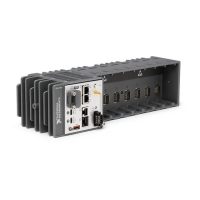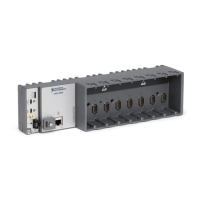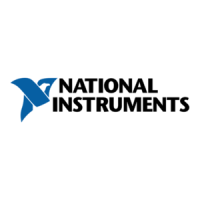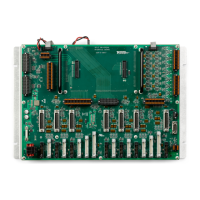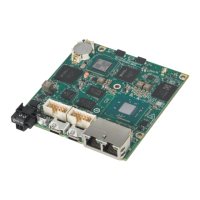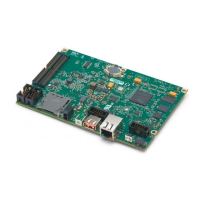• In general, shorter SEARAY stack heights perform better than taller stack heights.
• Directly mounting the thermal solution to a rigid surface provides the best performance.
If this method is not feasible for your design, minimize the amount of extra mass that
only the sbRIO-96xx supports, such as a heat sink or other thermal solution, that is
fastened to the standoffs. If you require substantial thermal solutions, provide additional
structural support.
• NI recommends that you use connectors that provide the following benefits:
– Positive locking
– Provisions for strain relief
– Substantial gold plating on pins
• The sbRIO-96xx has been tested to industry specifications for rugged environments.
• NI offers a variety of cable assemblies and other connectivity accessories to complete
your system design. Typically, these accessories include the best available designs,
materials, and plating to maximize performance and longevity in rugged environments.
Validating the System
NI recommends that you use a validation system for an extended period of time in a test
environment with the same thermal, environmental, and functional utilization characteristics as
the target deployment environment. You are responsible for final validation of your
application.
Temperature Validation Guidelines
The sbRIO-96xx includes four onboard temperature monitoring sensors to simplify validation
of a thermal solution by indicating thermal performance during validation and deployment.
The sensors measure the CPU/FPGA junction temperature and printed circuit board
temperatures that can be used to approximate the primary and secondary side local ambient
temperatures. This approach is called digital validation. Alternatively, the traditional analog
approach using thermocouples can be used to validate thermal performance. The digital
approach is more accurate for determining the performance of the CPU/FPGA but is more
conservative for determining the local ambient temperatures. NI recommends using digital
validation.
For digital validation, ensure that the reported CPU/FPGA, reported Primary System, and
reported Secondary System temperatures do not exceed any of the maximum temperatures
listed in this document. Thermal validation is complete if the reported temperatures are within
specifications. For more information about how to access the onboard sensors, visit ni.com/
info and enter the Info Code sbriosensors. If the reported Primary System temperature or
reported Secondary System temperature exceed the maximum temperatures listed in this
document then analog validation may be used for further verification.
For analog validation, measure the local ambient temperature by placing thermocouples on
both sides of the PCB, 5 mm (0.2 in.) from the board surface. Avoid placing thermocouples
next to hot components such as the CPU/FPGA or near board edges, which can cause
inaccurate temperature measurements. In addition to the local ambient temperature, the case
CompactRIO Single-Board Controller with NI-DAQmx Hardware Installation Manual | © National Instruments | 53

